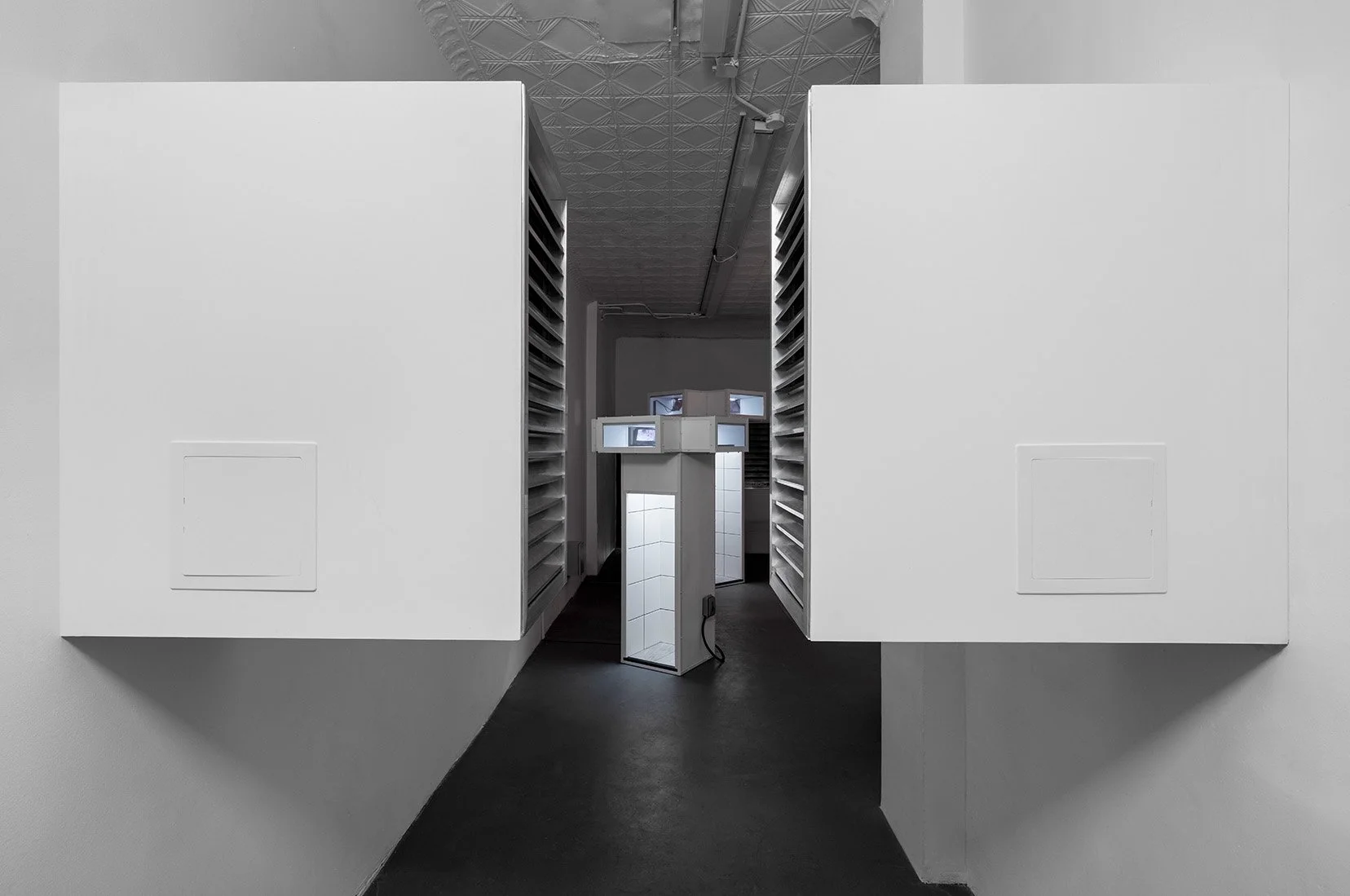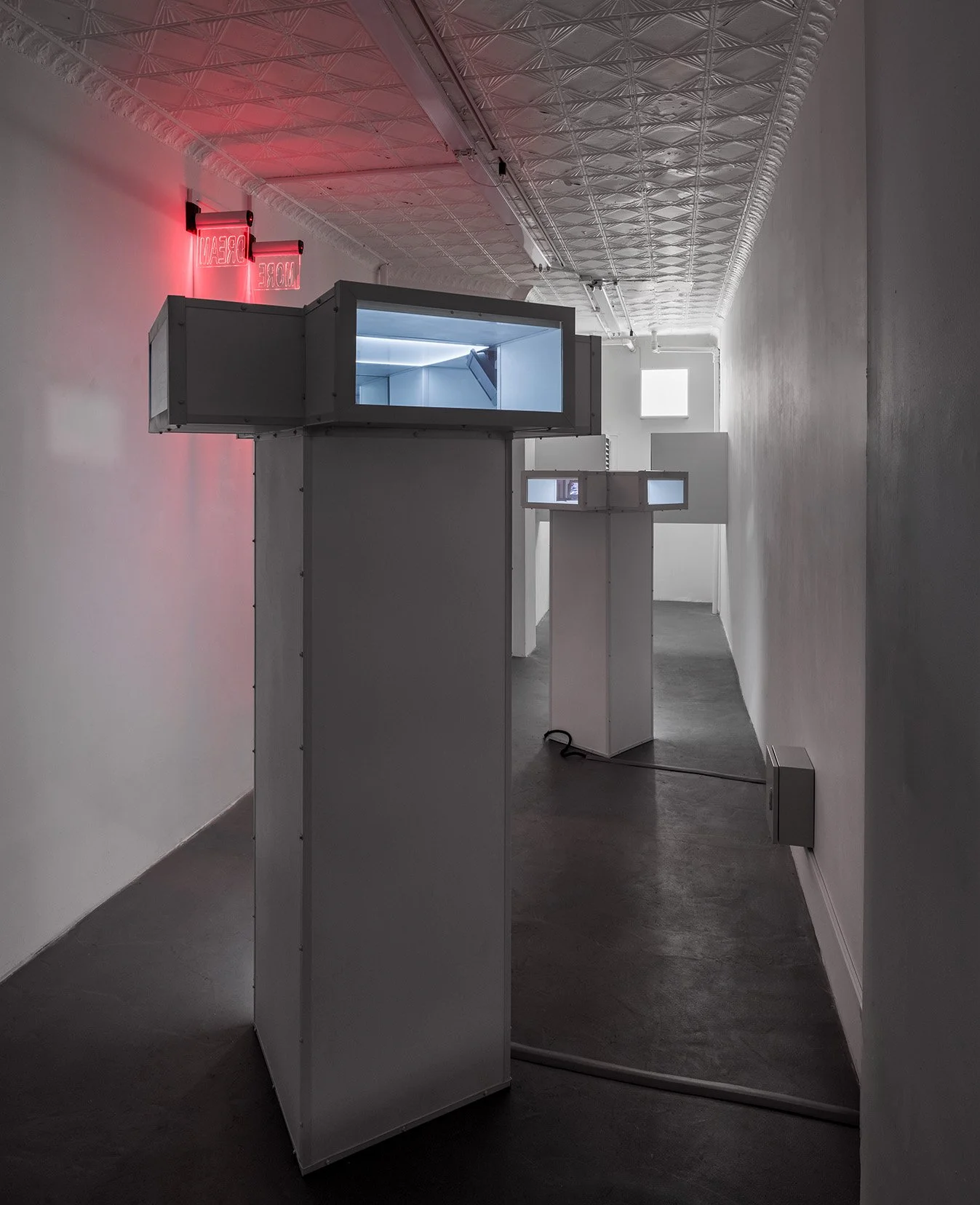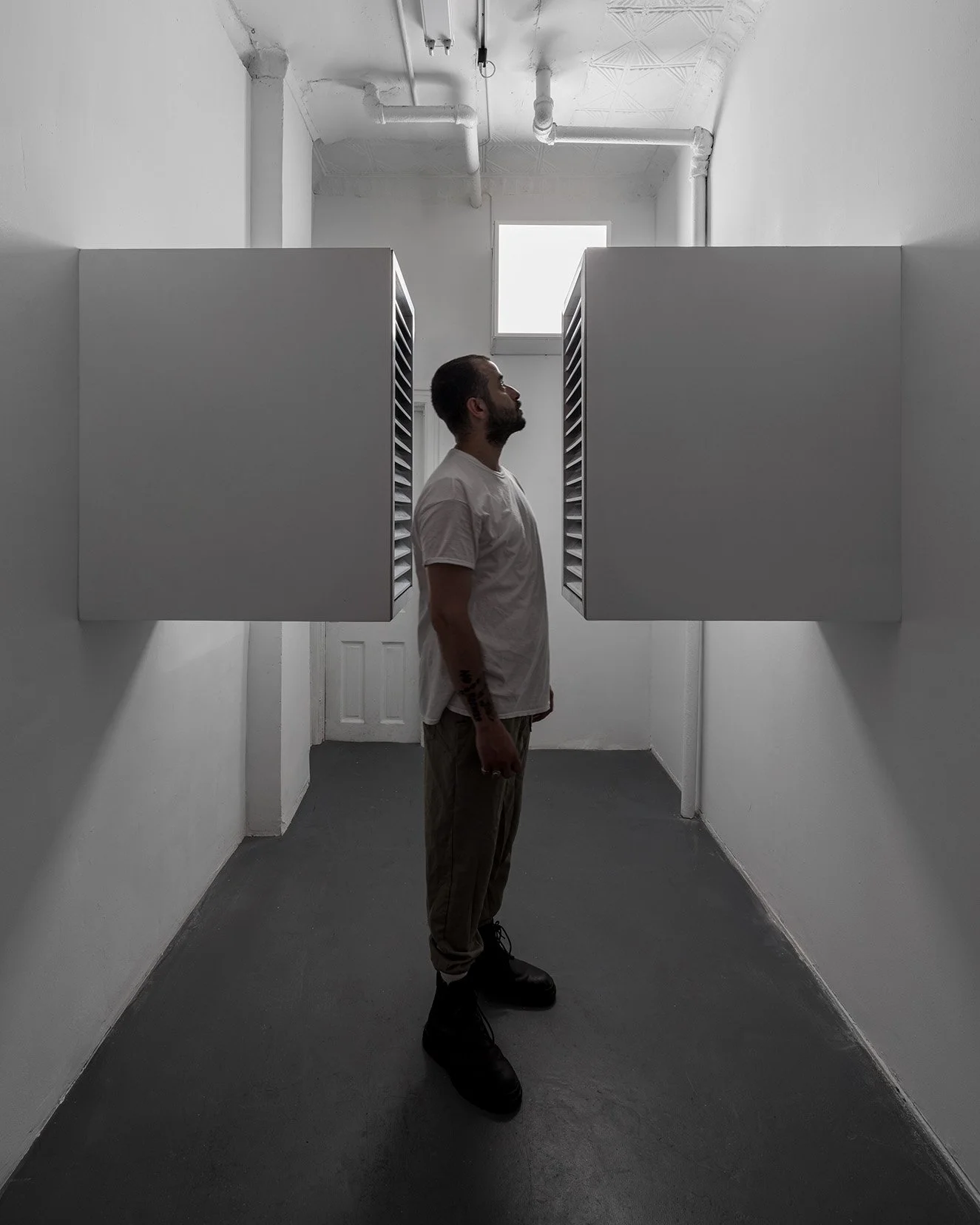“No Longer Me”: Displacement Echoed in Steel and Sound
After years of fleeing the confines of a Syria under dictatorship, Wael Haffar Habbal confesses he can no longer feel himself. Who is he now? Why does he keep drifting? Where is he meant to arrive? Even the reason he first left his homeland has begun to feel vague and distant.
As a socialist and cultural organizer, Habbal is expected to remain strong and critically engaged. But as a human being, he describes himself as “a stranger in a dark land, displaced and far from the warmth of [his] family.”
I first learned about Habbal’s story while passing through two sculptures placed face-to-face at GHOSTMACHINE Gallery—structures that resemble ventilation shafts of a subway system or an office building. Hidden speakers embedded within these forms recite poetry, their verses giving the exhibition its name: “No Longer Me.” The sound sculpture is a collaboration between Habbal and Zac Hacmon, an artist originally from Israel whose work consistently explores themes of safety and surveillance. Curated by Emireth Herrera Valdés, the show is on view from June 7 through June 29, 2025.
Habbal and Hacmon met in New York last year, at a moment when both were entering a new phase of life: fatherhood. Bringing new life into a world still shadowed by the dictatorships that led to both their own and their families’ dislocation made their shared questions feel all the more urgent. Habbal fled Syria in 2014 during the civil war, while Hacmon’s family was forced to flee Libya in the 1950s, and his father was born in a refugee camp in Israel. That inherited history of displacement continues to inform his socially engaged practice. To what extent, they began to ask, are their children destined to repeat these cycles of loss, survival, and inherited rupture?
Such questions can also be seen in Unit 7 & Unit 8 (2025), a pair of towering geometric sculptures. The smaller structure suggests a young life shaped under the looming presence of the larger, evoking a quiet tension between generations. Inside the taller sculpture, a looping video titled Tor (2018) shows a solitary figure walking through a system of barriers that gradually multiply. As the pathways become increasingly constricted, the video evokes a space of perpetual transition between locations, identities, and psychic states.
The whole gallery space is dimmed. It’s easy to notice that the only source of artificial light comes from two repurposed exit signs, now transformed into glowing text that reads “MORE DREAMS.” The dark humor in this piece isn’t even funny. It’s thrilling and unsettling. Like the rest of the in-between spaces created by the sculptures, it forces the audience to navigate zones full of tension and uncertainty.
The emotional peak of the exhibition arrives in a performance piece by Habbal and artist Elissavet Sfyri. Dressed in black shirts and pants covered with shards of white ceramic tiles, the two stand silently at the far end of the gallery, hidden behind the two vent-like sculptures. Only their legs are visible. They remain motionless for what feels like an eternity, as if their bodies have merged with the architecture itself.
Eventually, they begin to move. Slowly passing through the narrow gap between the two “vent” sculptures. The ceramic tiles on their bodies scrape harshly against the metal, creating a grating sound. They then circle the two tower-like structures at the center of the exhibition, sometimes trailing each other in quiet procession, sometimes facing each other in abrupt collisions. With every movement, the tiles on their clothing clash and clatter, creating a rhythm that evokes the repressed pain and inevitable eruptions of a long partnership, perhaps even the weight of marriage itself.
At one point, each performer climbs into the hollow interior of one of the towers. Only then does it become fully clear: the tiles they wear are made of the same material as the structures themselves.
Slowly, the performance becomes more violent. Habbal begins smashing a pile of unused tiles stacked along the gallery wall. Sfyri soon shifts roles. Instead of breaking, she gathers the shards and starts to piece them together like a mosaic, gluing them to a large wooden board laid on the floor.
But Habbal continues to destroy. The sea of broken tiles spreads steadily across the gallery, from the back corner to the entire space. The sound grows louder, more unbearable.
Audience members instinctively begin to retreat toward the entrance, some even stepping outside, as if the entire violent spectacle has collapsed inward into a private arena of pain, one that belongs only to the two performers, closed off to any attempt at empathy or intervention.
“I hide it so that no one knows my suffering,” This line from one of Habbal’s poems echoed in my mind long after I left the space. “… And where do I go? How can I escape this isolation that has become my identity?”
No Longer Me was on view at GHOSTMACHINE from June 7 to June 29, 2025.




